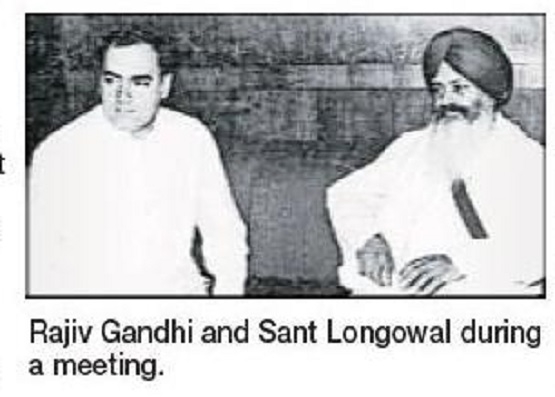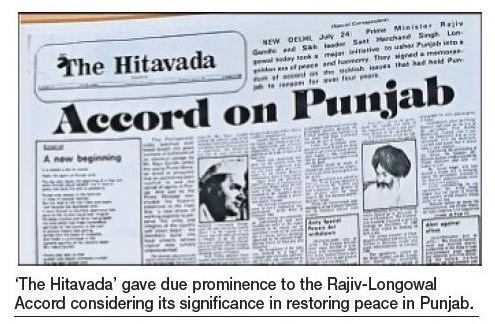Operation Black Thunder, Rajiv-Longowal Accord and withering away of militancy
| Date :01-Aug-2023 |

By Kartik Lokhande :
The Khalistan Files -- V
The bloody chain of events triggered by Khalistani separatism and actions to crush it continued even after Bhindranwale was eliminated. Some other Khalistan supporters in India tried to emulate Bhindranwale by occupying the Golden Temple Complex once again in 1988. However, this time, a well calibrated response and drawing right lessons from immediate history worked well for the country in general and Punjab in particular.
This time, KPS Gill was Director General of Punjab Police. He advised Rajiv Gandhi, Prime Minister, against entering the holy precincts. Instead, he devised a brilliant ‘Operation Black Thunder’ under which the Punjab Police, National Security Guards, CRPF, and other paramilitary units simply surrounded the precincts and played a game of patience while not allowing anyone to move in or out of the complex and not allowing food to go in. The terrorists tired out, and surrendered within seven days.
Media was allowed to cover the entire thing. Mediapersons showed to the world the scenes of the holy precincts after the terrorists had surrendered.

The scenes left many Sikhs disgusted and from this moment onwards, Khalistanis’ support base started dwindling. As the media had shown, the terrorists had misused the Golden Temple complex. As per one account, they
had defecated at many places and the ‘whole place was stinking’.
An important development came in 1985. Rajiv Gandhi and Sant Harcharan Singh Longowal signed ‘The Punjab Accord’ on July 24, 1985. As per the accord, also known as Rajiv-Longowal Accord, the Government accepted the demands of the Akali Dal.
In return, the Akali Dal agreed to withdraw its agitation. Most of the accord points saw implementation by the successive Governments, except for a couple of inter-State issues like river-water sharing.
An incident a few years later, in 1992, also withered away sympathy for Khalistanis. It was the death of Sukhdev Singh Babbar, head of the Indian Babbar Khalsa, in an encounter on August 19, 1992. He used to speak the language of enforcing on Sikhs strict codes of conduct, but a large section of Sikhs was disgusted to find that he had a woman companion in his car that had a ‘mini bar’ too.
The contrast between what they preached and how they conducted themselves, weaned away support for Khalistanis in India. Still, some or the other way, Khalistanis continued with their activity. Their last dreadful act was assassination of Beant Singh, Chief Minister of Punjab, in 1995.
One must give full credit to Sikh community for coming out of the disturbing phase and engaging itself meaningfully and contributing constructively to India’s progress. In the words of iconic journalist and Sikh historian Khushwant Singh, “By the end of 1995, Sikh militancy more or less came to an end. The overwhelming majority of Sikhs, who had never been sympathetic to the Khalistan call, were somehow able to put aside the bloodshed and bitterness, and return to the mainstream.
That took courage of a different kind and showed that the bonds binding Hindus and Sikhs, though strained, had not been irretrievably broken”.
Dr Manmohan Singh rose to become the Prime Minister years later, and General J J Singh became the chief of the Indian Army. Incidentally, after 21 years in exile, Dr Chauhan returned to India in 2001 and died in 2007. He had formed Khalsa Raj Party, but failed to muster support of Sikhs who remained true to their Indian roots.
This gave an impression that the dark chapter in Indian history was hopefully over. But, the Khalistan conspiracy kept brewing against India, in foreign countries.
(To be concluded)